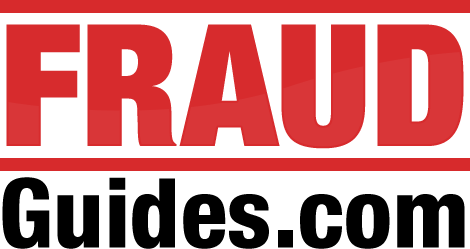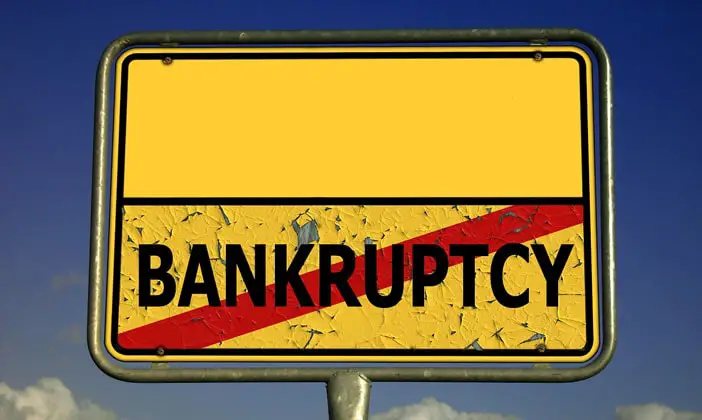Bankruptcy is a word many people are familiar with, but they might not know much about the subject. It’s a financial term. It’s the act of declaring a person cannot afford to pay back the debts they have incurred. There are many forms of bankruptcy a person might choose to file, but each one means the same thing. When someone makes the decision to file for bankruptcy, it typically means that person has exhausted every additional option for repaying debts and their bills. They simply cannot afford to repay their creditors no matter how hard they try, and bankruptcy is the last possible option they have.
How Does Bankruptcy Work?
While each different type of bankruptcy works differently as far as the details go, each type does have a similar aspect in the way it works. All bankruptcy cases require the person filling for this kind of debt relief to fill out ample paperwork. Said paperwork must list every single asset and every piece of property owned by that person. The courts need this to help determine the outcome of their bankruptcy claims.
To better understand how this process works, it helps to understand what it means. When a person files for bankruptcy, they blatantly admit they can no longer afford their debts. This is a benefit for the filer since their obligation to their debts is no longer an issue once the process ends. For their creditors, however, the end-game is much different. Creditors do not win in a bankruptcy situation. They are not given the money they are owed from people who borrowed from them, which is not fair.
This is why bankruptcy court requires all people create a list of their assets and properties. The bank then divides up those assets and properties and sells them so that the proceeds from the sales go toward paying off creditors who want at least a portion of their money. It’s their way of settling a person’s debt. The only assets people may keep are those that allow them to maintain their home and their job. For example, they may keep their vehicle if they do not have access to public transportation to get to work, and they may keep their electronics they use for work as well as their clothing and other personal items.
Other items, however, are not kept. Families do not need expensive artwork or furniture to maintain a home. They need beds, clothing, and the bare minimum. This means everything else in their possession might be sold to the highest bidder to pay off the debts they cannot afford to pay. This is why anyone who files for bankruptcy is required to make a list of all properties and assets. Bankruptcy is not a get out of jail free card for those who cannot afford to repay their debts. It’s a last-ditch effort to maintain some semblance of financial peace by doing whatever is necessary to repay creditors and get out from under those debts.
Is Bankruptcy Fraud Common?
Most people are desperate to get out of financial trouble, and they take their bankruptcy case seriously. Most people take every precaution to properly list their assets and do what’s required. However, there are always those who want to keep things that are important to them, and they commit bankruptcy fraud. They hide their assets, they lie on their paperwork, and they even do other underhanded and illegal things to keep what’s theirs.
Then there is another aspect of bankruptcy fraud. Sometimes the paperwork is so confusing and it’s filled with so many legal terms that people can’t understand what it’s asking. They make mistakes, they misunderstand directions, and they aren’t certain what’s being asked. This is a problem, but it’s not fraud if someone makes a mistake. Accidents and mistakes happen, and anyone who makes a mistake on their paperwork needn’t worry they will go to jail or pay hefty fines as a result. As soon as they realize their mistake, they bring it to the attention of the court to rectify the situation.
Examples of Bankruptcy Fraud
One way to understand what it is and what it means is to understand what constitutes bankruptcy fraud. A person who doesn’t want to lose their car might deed it over to a friend prior to filing. For example, a man owns his classic sports car outright, but he can’t afford to pay his other debts. He needs to file for bankruptcy, but he knows this car is going to be sold to pay for his debts. Before he files, he transfers ownership of the car to his own mother so he can keep it under her name. That’s bankruptcy fraud.
The same man decides he’s going to leave a few of his favorite pieces of expensive art off his asset schedule when filing. He loves those pieces. He and his wife picked them up in Paris on their honeymoon decades ago when they were young and wealthy, and now she’s gone and that’s a fond memory. Rather than include them on the list, he leaves them out and hides them in storage. It’s fraud.
Other examples of include creating false documents to hide items that are still in the possession of the person filing, paying a friend or family member to hide assets, and lying about property transfers prior to the bankruptcy filing occurring. Anyone who engages in this type of illegal activity prior to or during the filling process will face penalties. Jail time of up to 20 years as well as fines up to $250,000.
Another type of fraud occurs before the filing occurs, and many people are unaware it’s fraud. If someone lies on their credit application overstating their income to receive more credit, if they use all their available credit to purchase luxury items, or they begin writing bad checks just before they file, they are guilty of fraud.
Identifying Bankruptcy Fraud
It’s often easy to see bankruptcy fraud when it occurs in the corporate world. There are certain signs and misrepresentations people are encouraged to look for when identifying this type of fraud, and they are very common.
- Bleed-Outs – This occurs when someone who works for a company begins trading assets from inside the business. They often benefit a small group of people inside a business.
- Bust-Outs – This type of fraud occurs when someone sets up a business, establishes a business line of credit, and then buys and resells a number of items from their creditors without every paying back what they owe. They continue to make promises to pay before finally filing for bankruptcy.
- Looting – This occurs when a company decides to take it upon themselves to sell off their assets prior to filing for bankruptcy. Rather than using the money they make from the sale of assets to pay down debts and get out of financial trouble, the company hides the sales and pockets the profits.
Not all forms of bankruptcy fraud occur when there is a business involved. Many people do it on their own when they need to file for this debt relief. Some of the ways people might recognize bankruptcy fraud on a personal level include the following.
- Friends or family members ask a person if they would be willing to hold on to their personal items, especially items that are valuable or expensive such as vehicles, artwork, furniture, and jewelry.
- People file for bankruptcy with very few assets in their home. For example, they have very little furniture in a large home and have no receipts or proof they sold their items prior to filing so they could raise money and make their payments.
When Someone Makes a Mistake
Not all missed assets or mistakes on bankruptcy paperwork indicates fraud is occurring. A blue-collar family without much to their name might sell off anything and everything they can to make payments on their bills so they don’t ruin their credit or simply so they can afford food for their kids or money for their class field trip. They don’t keep receipts of those things, and they have very few assets left when they file.
They might make mistakes on their paperwork. They might forget about that very expensive piece of jewelry their grandmother left them when she died that’s in a safety deposit box at the bank. They might simply mistake the instructions on paperwork for something else. It happens all the time, and people make mistakes.
When this happens, people should contact their attorney or the court to come forward with what they’ve realized. They should not attempt to hide it. On that note, most courts and attorneys are well-versed when it comes to recognizing a mistake that’s not a blatant lie. These people needn’t worry they will go to jail or pay fines if they come forward.
If a person suspects bankruptcy fraud is occurring, it is their legal duty to report it. It’s a billion-dollar a year industry that directly affects the interest rates and prices Americans pay to live each year. The United States Department of Justice allows anyone to report their suspicions by providing the following information:
- The name and address of the person suspected of fraud
- Any evidence a person has
- A case number, if it’s possible a person has that
- Description of the fraud
- Any information regarding assets that were concealed, sold, or lied about
This requires a lot of detail, and more details are better. People who report bankruptcy fraud are not required to share their own identities if they choose not to. Any information should be directed toward the Department of Justice by visiting their website for more information such as mailing addresses, email addresses, and even phone numbers.

